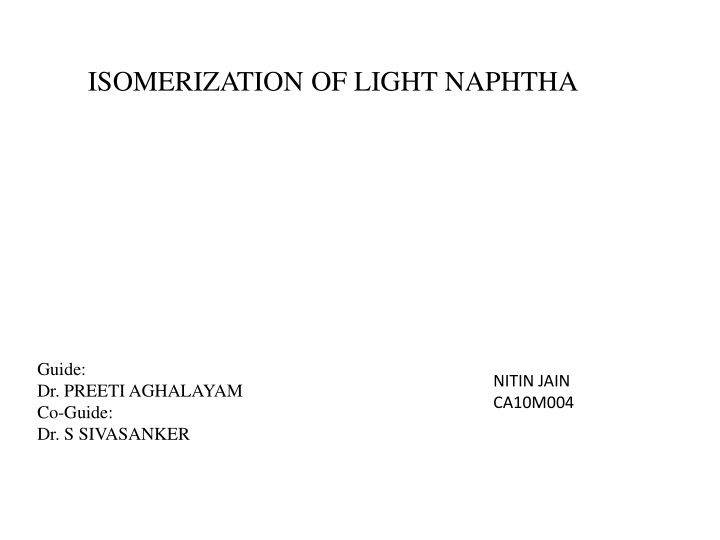
Advanced Techniques in Naphtha Isomerization Process
Learn about the crucial process of isomerizing light naphtha to produce high-octane gasoline blend stocks, essential for meeting future environmental regulations. Explore the use of Friedel-Crafts catalysts and the equilibrium compositions of paraffins to optimize the isomerization process effectively.
Download Presentation

Please find below an Image/Link to download the presentation.
The content on the website is provided AS IS for your information and personal use only. It may not be sold, licensed, or shared on other websites without obtaining consent from the author. If you encounter any issues during the download, it is possible that the publisher has removed the file from their server.
You are allowed to download the files provided on this website for personal or commercial use, subject to the condition that they are used lawfully. All files are the property of their respective owners.
The content on the website is provided AS IS for your information and personal use only. It may not be sold, licensed, or shared on other websites without obtaining consent from the author.
E N D






















